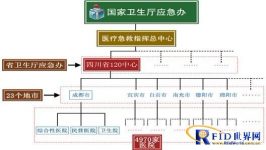
Medical emergency system sharing platform_v1.2.
[ad_1]
Project background
In the process of informatization of public welfare institutions in the health industry in my country, the medical treatment information system has become the weakest link in the construction of the emergency system for public health emergencies. In particular, there are still gaps in the information exchange, interconnection, and shared application of the pre-hospital emergency and in-hospital treatment systems, and they need to be strengthened urgently. The central government’s new medical reform opinions require “vigorously promote the construction of medical and health informatization…strengthen the construction of information standardization and public service information platforms, and gradually realize unified, efficient, and interconnected.” At the same time, the Ministry of Health has issued a series of information system construction and information in recent years. Standardized documents.
This plan is designed in accordance with the “National Public Health Emergency Medical Treatment Information System Construction Plan” issued by the Ministry of Health in September 2009 and the “Health Information Society Issued 2010]No. 8” document, ensuring that the Ministry of Health, the Department of Health, The 120″ emergency center is connected with the information system of the health and medical institutions in various cities (prefectures). At the same time, it conforms to the Ministry of Health’s construction principle of “unified planning, step-by-step implementation, and benefiting while building”.

An Introduction
² Typical applications of the Internet of Things
The construction of the emergency platform needs to combine the current Internet of Things technology and 3G wireless communication and other advanced and forward-looking technologies, and establish a foundation based onRFIDThe electronic tag Internet of Things technology manages the individual electronic medical records of patients to establish a unified medical emergency service platform in all provinces of the country with a B/S distributed architecture, which organically integrates the supervision of the original isolated Department of Health, the manual dispatch of the “120” emergency center, and the hospital attendance Connect together to achieve the goal of unified supervision of the platform, sharing of medical resources, and cost saving.
² Overall construction goals
Realize an integrated public service network platform with the main application technology of the Internet of Things as the core, establish a national-level “Medical Emergency Data Information Center” platform sharing mode, and highly integrate various high-tech information technologies such as RFID electronic tags and 3G wireless communications. Satisfy the improvement of the work efficiency of health departments, “120” emergency centers, hospitals and the government’s supervision of medical institutions, as well as the emergency rescue dispatch for daily first aid or sudden and group incidents (such as SARS and other unknown etiological events) And management
² General idea of emergency system design
The platform uses UHF RFID technology to identify individual electronic medical records of emergency patients, and uses electronic medical records that comply with international emergency standards to record emergency treatment process information to standardize emergency procedures in hospitals. At the same time, combined with video technology, voice technology, and 3G wireless communication technology, the emergency field data information is uploaded to the emergency medical data sharing center of the province in real time for the Ministry of Health, the Department of Health, 120 centers at all levels, and various hospitals for hierarchical use. Based on wireless video transmission The remote emergency support system provides comprehensive support for each rescue site. See the network topology diagram below:

System architecture diagram
Real-time upload of data collection
? Use tablet RFID computer E8990 to take pictures of patients and wear wristband tags, enter patient information and associate wristband tags, and upload them to the central server. Use individual emergency terminal to realize video and voice remote support.
? Call remote support, establish electronic medical records for patients through remote medical emergency expert support, enter emergency information and finally upload it to the server. The following figure is the collected data information roughly needed in the first aid process:
System vision
1. The health department can supervise and command the “120” center and hospitals through the service platform, and automatically obtain customized statistical data reports on a regular basis, with the provincial health department data center as the center, 120 emergency sub-centers in various cities and other health systems Three-level way to carry out flexible regional authority control.
2. Through the service platform, the “120” center makes reasonable dispatch to the hospitals under its jurisdiction, supervises the hospital’s emergency attendance in real time and tracks the handling of emergency incidents, and improves and monitors the efficiency of handling emergency incidents in each hospital
3. The promotion of the system service platform will drive good economic benefits for companies such as 3G business, RFID chips, handheld terminals, and medical equipment. The service platform provides a transparent and open functional management method for the supervision, dispatch and emergency response of the health department. To show the public a fast, accurate, and open demonstration window for the government’s functional departments to handle medical emergency situations, and at the same time produce good social effects.
4. Internet of Things technology application of medical emergency resources: a project of science and technology to serve the people’s livelihood, an innovative technology to solve the shortage of medical emergency resources and irregular emergency services, and give full play to the purpose of “technology for the people’s livelihood”
5. A new portable and universal 3G individual medical emergency system developed by integrating multiple technologies such as RFID electronic identification, 3G wireless communication, GPS positioning, and video compression transmission; unified and shared service platform construction to avoid repeated investment and intensive Quickly build a new generation of unified network application platform across the province
Platform hardware implementation
|
|
|
||||||||||||||||||||
|
|
|
||||||||||||||||||||||||||||||||||
[ad_2]





